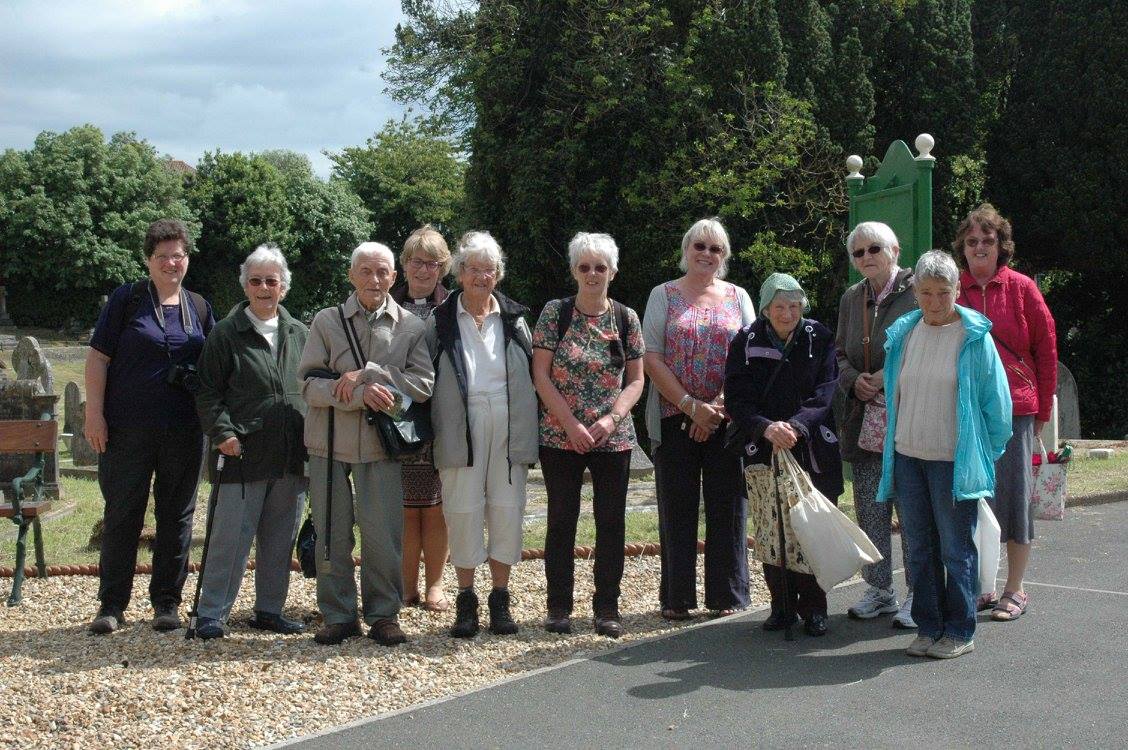RSHG Summer Open Days 18 -19 June 2016
Ryde Social Heritage Group held their annual Summer Open Days at Ryde Cemetery Heritage and Learning Centre during the weekend of 18 and 19 June. Although there wasn’t blazing sunshine, it was warm, not windy and the rain stayed away. Thanks to the Sexton, John Martin, the Ryde Cemetery grounds were looking very attractive and tidy, with new summer flowers in the various beds.
The theme this year was ‘Family Business’ and the exhibition showed how many family businesses were handed down over the generations and the variety of trades and professions that existed in the town of Ryde. There were not only the rich and educated professions such as architects and doctors but also the blacksmith, chimney sweep, those in domestic service and agricultural workers. Displays demonstrated how family life was very different for the upper, middle and lower classes. ‘Family Loss’ due to war and ‘Finding Family’ through research were other themes that were explored.
A new RSHG project, ‘The Lost Children’, was launched at the weekend. There are many areas in the cemetery that appear to be just grassed with few memorials. On checking the maps and records these are child burial plots and to date we have found 19 separate areas in Ryde Cemetery, many from the Victorian period. The project, with the help of Bereavement Services, IW Record Office and other local resources, will record the names of all the children on our maps, indexes and website, and research the social conditions and diseases affecting the lives of children in Ryde. The display showed one area of the cemetery that has just two memorials but 42 children buried in the section; a brief introduction to the social conditions in the town; the improvements in water quality and medical advances; and some of the common childhood diseases of the time. It is hoped RSHG will be able to place plaques in the child burial areas at the end of the project.
As always there were lots of guided walks ongoing throughout the weekend.
On Saturday morning Bill Shepard and Sue Blackwell led a nature walk. The walk started in the Old Parish Cemetery Conservation area where the meadow grasses have grown tall and make a picturesque scene and then progressed through to the New Cemetery. Sue pointed out many of the wild flowers giving vibrant colour and the insects which abound in the Conservation area. Bill has a passion for trees and was delighted to find the variety of evergreens doing well, some from the original planting making them around 150 years old. Bill led the group to the New Cemetery to find a particular holly tree he remembered from a visit about 20 years ago – and he found it; a hedgehog holly. Its leaves are curled and spiky and look just like a hedgehog.
David Earle conducted general cemetery walks and Kate MacDonell led a World War One Trail.
The Character Walk or ‘Meet the Residents’ had appreciative audiences on both days and continued the family theme. Mrs Louisa Lake (played by Ann Barrett) made a return appearance with a revised script concentrating on the health problems her family endured as well as her story of running the Eagle Brewery for over half a century. James Wallis (played by David Bushell) was a new character based on very recent research. He was an eminent architect and surveyor and had a family of several daughters. He never really understood women! Mrs Elizabeth White (played by Poppy Higgin and Carol Strong) was another newly researched character who had a family of 11 sons, 10 of whom served in the First World War. We heard about her brave boys and her brave self.
Wendy and Nicki from Grave Concerns joined us on Sunday with a display of the work they do throughout the Island cemeteries to clean, rejuvenate and maintain graves on behalf of relatives. They were able to offer advice and take on new commissions.
Refreshments were available throughout the weekend and many visitors took the opportunity to take tea and browse our information files in the learning centre. Over the two days the numbers attending were just over 90, with Saturday being the most popular. Although possibly not as many we would have liked, those who did come tended to stay for long periods and were very appreciative of the displays and activities available.

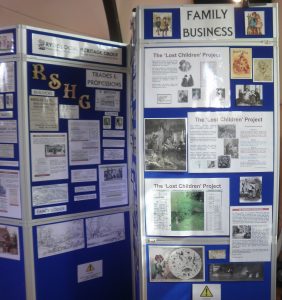
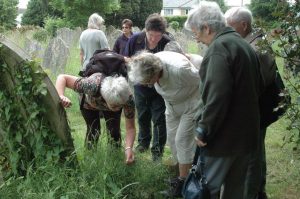
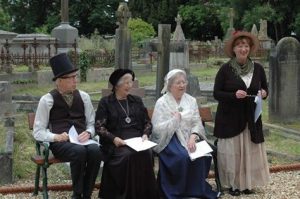

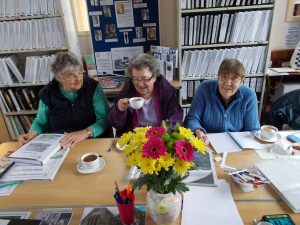
Photographs by Arthur Williams, Carol Strong and David Bushell

